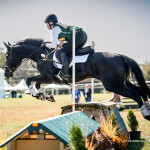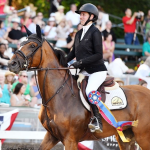Polo has long been dubbed the “sport of kings,” a label that evokes an air of exclusivity, wealth, and prestige. But thanks to Netflix’s riveting new docuseries, this centuries-old equestrian sport is riding a fresh wave of interest, pulling in audiences far beyond its traditional elite circles.
Whether you’re an equestrian enthusiast, a curious spectator, or simply someone captivated by the lifestyles of the rich and famous, this documentary has sparked a broader conversation about polo's cultural, financial, and athletic dimensions.
Table of contents [Show]
Behind the Scenes of Polo’s Most Influential Players
The Netflix documentary, which stars renowned players like Adolfo Cambiaso and his teenage son Poroto Cambiaso, offers an unprecedented look at the polo world—both on and off the field. Executive-produced by Prince Harry and Meghan Markle, the series peels back the layers of an otherwise enigmatic sport. Through fast paced cinematography and candid interviews, viewers get an intimate view of the adrenaline, skill, and teamwork required to dominate this fast-paced game. It humanizes the players, capturing their relationships with horses and the challenges they face balancing family commitments with the pressures of competition.
For equestrians and horse lovers, the documentary is a feast for the senses. The delicate partnership between player and horse, known as the pony, is portrayed as a symbiotic relationship, one that surpasses language and underscores the sport's reliance on trust and precision.
But this docuseries isn’t just for equestrians. It dives into themes of ambition, sacrifice, and privilege, making it equally engaging for those fascinated by pop culture’s obsession with the glamorous lives of athletes and elites.
Why Polo Continues to Captivate
Historically labeled the “sport of kings,” polo’s rich legacy stretches back thousands of years, originating in Persia before becoming a favorite pastime of royals and aristocracy from Britain to India. Its allure lies not just in the thrill of the game but in its association with wealth, refinement, and exclusivity.
It’s no secret that participating in polo comes at a steep cost. From acquiring and maintaining top-notch horses to hiring trainers and employing grooms, the sport requires a significant financial commitment. And for professional players, there’s significant money to be made. Elite players like Adolfo Cambiaso reportedly earn millions annually, with tournament winnings, sponsorship deals, and other endorsements contributing to their income. Naturally, this dynamic attracts the ultra-rich, including Hollywood A-listers, European royalty, and business tycoons, further cementing polo’s reputation as an emblem of affluence.
Yet this association with wealth has created a barrier for many who dream of trying their hand at polo but assume it’s out of reach.
Connecting Beyond the Horse World
One of the documentary's most compelling achievements is its ability to bridge the gap between niche equestrian interests and the wider public. For viewers outside the horse world, polo isn't just about the game—it's a gateway into an aspirational lifestyle. The manicured fields, luxury automobiles, and high-fashion soirées create a world that many find intoxicatingly glamorous. With Prince Harry and Meghan Markle attached to the project, the story takes on an added layer of intrigue, as their celebrity and philanthropic efforts draw further attention to the documentary’s themes of discipline, dedication, and the human spirit.
However, the docuseries is not without its controversies. Some reviews praise its cinematic storytelling and stunning visuals, but others argue that it romanticizes a sport that’s heavily criticized for its exclusivity. That said, Netflix seems to have a hit, with strong initial viewership numbers and increased searches online for local polo clubs and lessons.
Common Challenges: Can Polo Become Inclusive?
Polo’s high financial barrier to entry has caused many to label it a “sport for the wealthy.” To play polo competitively, participants often spend tens of thousands of dollars each year on equipment, training, and tournament fees. Critics point out that this puts it out of reach for middle- or lower-income individuals, perpetuating the exclusivity that can alienate potential enthusiasts.
Environmental concerns regarding the care and transport of horses are also raised, as are ethical questions about pony welfare. That said, many organizations and wealthy players are taking steps to make the sport more accessible, sustainable, and humane.
Grassroots clubs are popping up worldwide, offering lessons and mentorship programs to those curious about the sport. Initiatives such as shared pony systems and sponsored programs for kids are helping more people experience the thrill of polo for the first time.
How You Can Get Into Polo
For those feeling inspired to give polo a shot, the good news is that you don’t need to own a stable full of ponies to get started. Local polo clubs often host beginner clinics and provide rental options for horses and equipment. Here are a few tips to make your entry into the polo world a bit easier:
- Start Local: Look for a polo club near your area. Many clubs welcome beginners and provide all the necessary equipment so you can learn the sport before investing in it.
- Join Group Lessons: Group training sessions often make polo more affordable and allow you to meet people equally passionate about the game.
- Tackle Fitness First: Polo requires upper-body strength, agility, and endurance. Consider working on your general fitness to prepare yourself for the physical demands of the sport.
- Build a Connection with Horses: Connect and get involved with a local barn to become comfortable around horses and enhance your riding skills. Polo isn’t just about hitting the ball—it’s about forming a bond with your pony.
The Netflix documentary has undoubtedly rekindled interest in this equestrian sport. And while polo isn’t without its challenges, there’s a noticeable movement toward greater inclusivity and sustainability within the community. With more opportunities to get involved and a growing desire to redefine its image, polo might just step out of the shadows of exclusivity and into the spotlight it deserves.
If you’re curious to see how passion, teamwork, and precision come together in one of the world’s oldest and most beautiful sports, consider giving the Netflix documentary a watch. Who knows—it might inspire your inner equestrian to saddle up and give polo a try!








